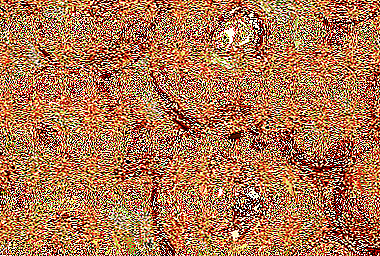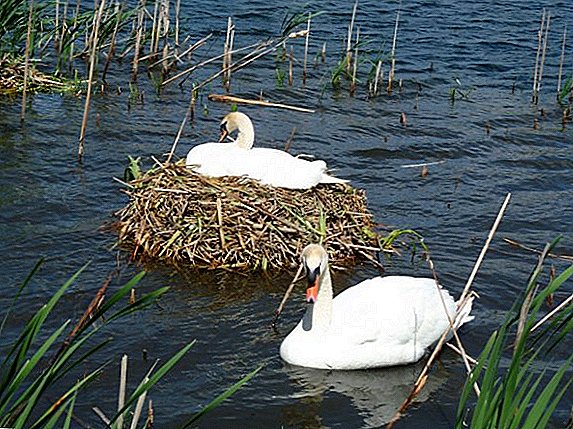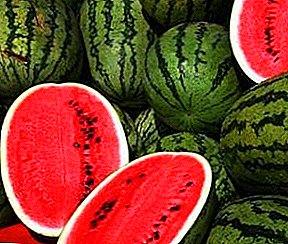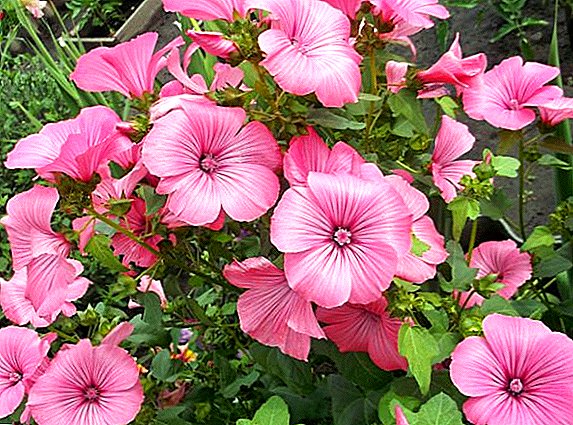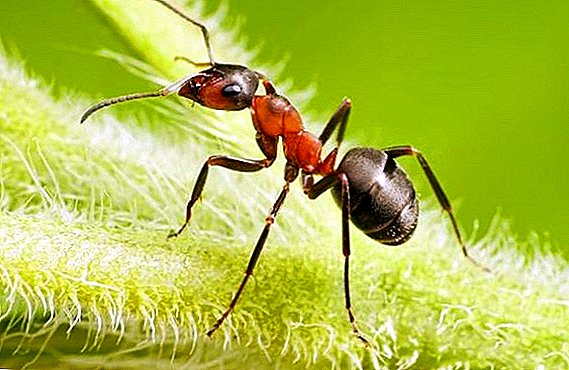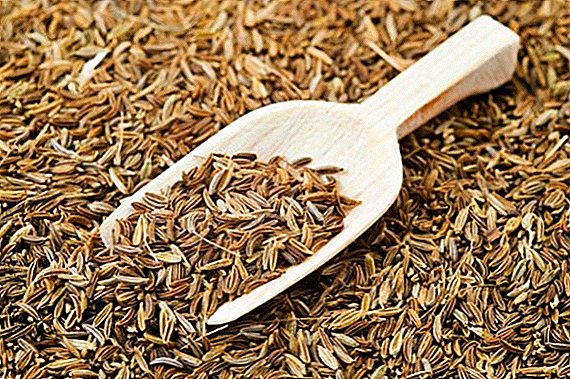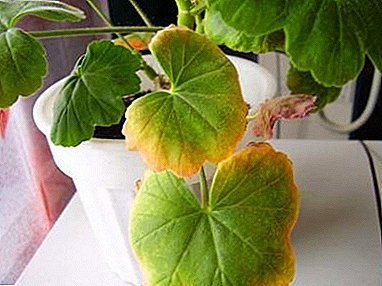
Geranium is a non-capricious, beautiful indoor plant that feels great in the open field. Fragrant leaves and big hats of pink or red flowers were also liked by our great-grandmothers. Previously, no one paid attention to the diseases of this magnificent plant, since it is enough to plant a cutting and a new magnificently flowering plant will be ready.
But at the moment all flower growers, both professionals and amateurs are actively discussing the diseases of this magnificent plant. Why does it happen that the plant has no leaves or they turn black or fall off, how to help a flower that starts to fall ill?
Small leaves
It often happens that after the winter “sleep” new leaves start growing on geraniums, but they are very small and pale - why is this happening?
Why does this happen?
If we turn to experienced flower growers with a question - why new leaves on geranium grow much smaller, compared to the previous ones, then most likely the answer will be as follows: Geranium should be cut regularly, just so the plant will not lose its decorative properties.
Tip! When growing geraniums, it is worth adhering to the well-known rule of "golden mean" - watering and fertilizing should be timely.
How to solve a problem?
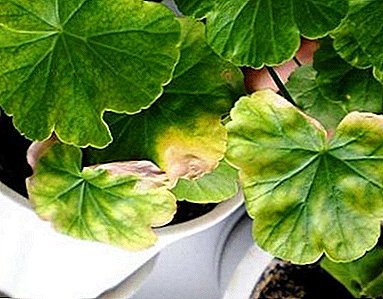 First of all, it is worth looking at whether the pot in which the geranium grows is not small for it - this is one of the reasons why the leaves began to grow small.
First of all, it is worth looking at whether the pot in which the geranium grows is not small for it - this is one of the reasons why the leaves began to grow small.- If the pot is chosen correctly, it has enough drainage at the bottom, the flower receives moisture in a timely manner, then you can try to change the soil. Geranium quickly grows and develops and during the flowering period consumes a lot of energy, and it is quite likely that the soil in the pot was impoverished.
- Then you can spend foliar feeding - irrigate the plant with liquid fertilizers. But it is worth remembering that it is impossible to exceed the dosage that the producer of fertilizing recommends - you can burn the leaves of geranium and then it will get worse.
- The most suitable dressing for geraniums is N-P-K 10-10-10.
- Do not forget about root dressings, which are held every two weeks. If the leaf has become small, then in addition to nitrogen you need to make phosphate and potassium.
- It is good to add iodine to the soil diluted in water. At 1 liter take 1 drop. Then collect the solution in a five-cubic meter syringe and carefully introduce it into the soil as close as possible to the walls of the pot. You need to be very careful, because if the composition gets to the roots, they can get a severe burn.
- If after the transplantation of the geranium small leaves began to grow, then it is quite possible that the roots were damaged during the transfer process. In this case, you need to water the flower "Kornovin" and strictly monitor the soil moisture.
The plant has a little green part
Geranium - a plant is not whimsical, but, despite this, it can respond to improper care.
Why does this happen?
Many growers with great experience know firsthand that Geranium takes not an attractive form, not only from various diseases, but also from the wrong content.
So it turns out - the stems are stretched and the leaves on them are very small. Very often, beginning growers observe this phenomenon in winter.
 But do not immediately send the plant in the trash - the flower can and should be saved. Simply put the pots in the sunlight, while pre-cutting the stretched shoots to the desired height.
But do not immediately send the plant in the trash - the flower can and should be saved. Simply put the pots in the sunlight, while pre-cutting the stretched shoots to the desired height.
Besides, flower must be periodically rotated so that it is smooth and lush. If even after these manipulations, the plant stops growing and stops producing new leaves, then you need to take action.
What to do?
First of all, the plant is carefully examined for the presence of insects and diseases. If not, and not the other could not be identified, then the matter is in dressing, and soil acidity. You can do the following:
- Replant the plant by changing the soil. This should be done with great care so as not to damage the roots of the plant, otherwise it will recover for a very long time.
- To carry out continuous feeding, at the same time it is possible to use not only purchased complexes, but also folk remedies. For example. When transplanting, use egg shells as drainage.
Green does not grow on a flower
What is not growing?
Geranium has a very pleasant and specific aroma, but, despite this, some insects still hit the plants. At the very beginning of infection, the flower has a healthy appearance, it just stops its development, and the leaves grow to stop. Geranium will not grow if it has been attacked by mealybugs. They are very small and can accumulate in the most secluded places, feeding on green mass.
The whitefly is another pest that is not afraid of the smell of geranium. To find out about its presence on the plant is very simple - shake the flower, if white dust appears, then it is time to take action.
What to do?
 It is necessary to identify the cause - this is done by inspecting the plant. If parasites are found, then it is worth applying insecticides, having processed a plant according to the instruction, which is written on the packaging of the drug.
It is necessary to identify the cause - this is done by inspecting the plant. If parasites are found, then it is worth applying insecticides, having processed a plant according to the instruction, which is written on the packaging of the drug.
If there is no disease in the plant, it is worth reviewing the conditions for keeping a flower - change the soil and pots, apply fertilizer and fertilizer, move the pot to a lighter sill.
Leafs and flowers fall down
Geranium pleases the eye with its lush buds, but suddenly for some reason they began to fall off along with the leaves.
What are the reasons?
Flower growers who grow geraniums for a long time say that in order to for geranium to prepare for flowering, it needs to create appropriate conditions - moderate temperature and a sufficient number of useful trace elements.
If there is not enough boron, the buds will begin to fade, still in the bud. Measures must be taken immediately, otherwise the plant will drop the formed buds, but will not release new ones.
The store does not have the appropriate fertilizer, cook it yourself - in a liter of water, dissolve 1 gram of boric acid and spray geranium.
Attention! Inspect the unopened buds, if small holes are found, then the plant is affected by leafworm caterpillars, which wilt inside the plant and begin to eat it.
In this case, the caterpillars are harvested, and the plant is treated with a bacterial spray - the caterpillars die on the second day. As soon as geranium has laid new buds, it cannot be moved to another place. - she can reset them.
A photo
Further on the photo you can see examples of the defeat of geraniums with various ailments.




Other diseases: causes and solutions
Problems with breeding geraniums mainly arise from illiterate care, but flower diseases caused by bacteria should not be ruled out. Blackening leaves and stem should alert florist.
Symptoms of the disease:
- weeping spots on the lower part of the leaf, rounded;
- subsequently, the spots turn into large lesions of a dark brown color;
- if you feel the damage, they will be hard;
- the infection spreads very quickly and therefore the stem turns black in a few days;
- the roots are black, but without signs of rot.
Often the blackening of the leaves and the stem leads to the death of the plant, it is worth noting that such an infection cannot be treated, and it is better to destroy the flower along with the soil, and to disinfect the pots.
The main measures for the prevention of this disease is the observance of sanitary standards. All tools that work with the plant must be constantly disinfected.
In addition, it is necessary to monitor the humidity of the air in the room where geranium is located and to conduct ventilation. Do not forget to take the flower out to the balcony in the summer, it will favorably affect his health.
Important! If the roots of the geranium are blackened, and the top of the stem is still green, you should not take cuttings for transplant - they are already infected and still will not take root.
Requirements for the care of geraniums are not complicated, and quite doable. With proper cultivation, geranium will delight you with magnificent buds for a long time.


 First of all, it is worth looking at whether the pot in which the geranium grows is not small for it - this is one of the reasons why the leaves began to grow small.
First of all, it is worth looking at whether the pot in which the geranium grows is not small for it - this is one of the reasons why the leaves began to grow small.